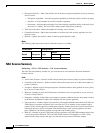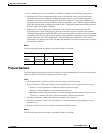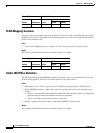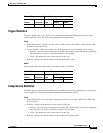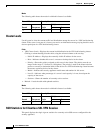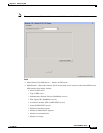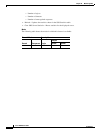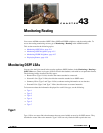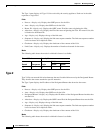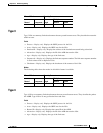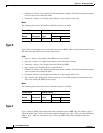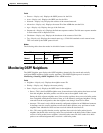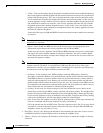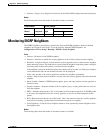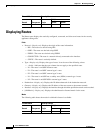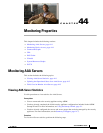
43-2
Cisco ASDM User Guide
OL-16647-01
Chapter 43 Monitoring Routing
Monitoring OSPF LSAs
The Type 1 pane displays all Type 1 LSAs received by the security appliance. Each row in the table
represents a single LSA.
Fields
• Process—Display only. Displays the OSPF process for the LSA.
• Area—Display only. Displays the OSPF area for the LSA.
• Router ID—Display only. Displays the OSPF router ID of the router originating the LSA.
• Advertiser—Display only. Displays the ID of the router originating the LSA. For router LSAs, this
is identical to the Router ID.
• Age—Display only. Displays the age of the link state.
• Sequence #—Display only. Displays the link state sequence number. The link state sequence number
is used to detect old or duplicate LSAs.
• Checksum—Display only. Displays the checksum of the contents of the LSA.
• Link Count—Display only. Displays the number of interfaces detected for the router.
Modes
The following table shows the modes in which this feature is available:
Type 2
Type 2 LSAs are network link advertisements that are flooded within an area by the Designated Router.
They describe the routers attached to specific networks.
The Type 2 pane displays the IP address of the Designated Router that advertises the routes.
Fields
• Process—Display only. Displays the OSPF process for the LSA.
• Area—Display only. Displays the OSPF area for the LSA.
• Designated Router—Display only. Displays the IP address of the Designated Router interface that
sent the LSA.
• Advertiser—Display only. Displays the OSPF router ID of the Designated Router that sent the LSA.
• Age—Display only. Displays the age of the link state.
• Sequence #—Display only. Displays the link state sequence number. The link state sequence number
is used to detect old or duplicate LSAs.
• Checksum—Display only. Displays the checksum of the contents of the LSA.
Modes
The following table shows the modes in which this feature is available:
Firewall Mode Security Context
Routed Transparent Single
Multiple
Context System
• — • ——



